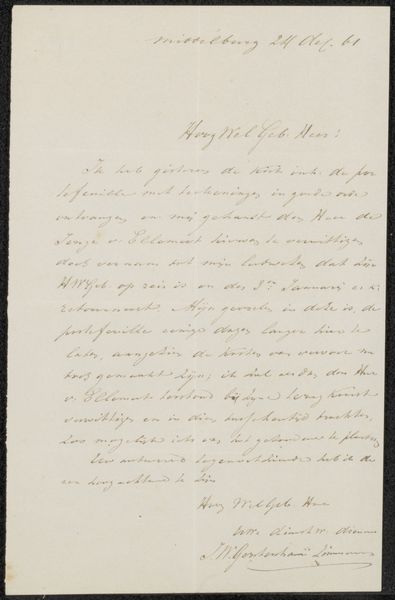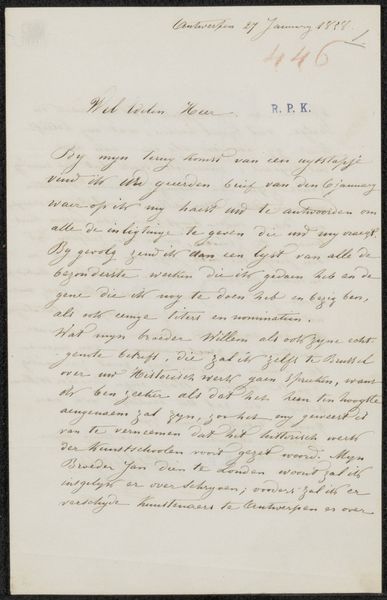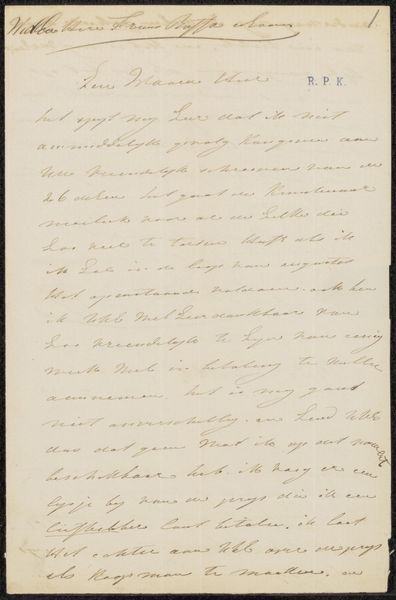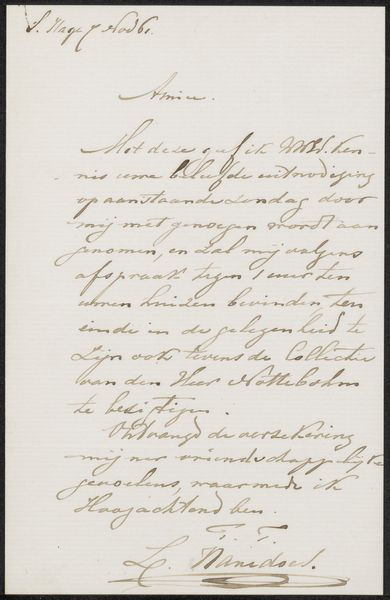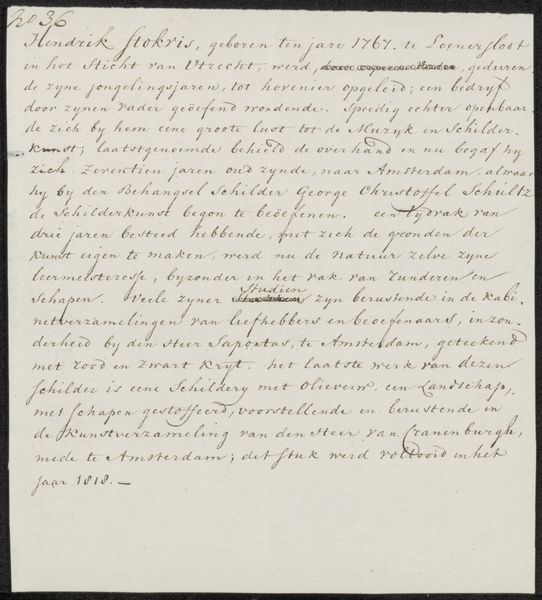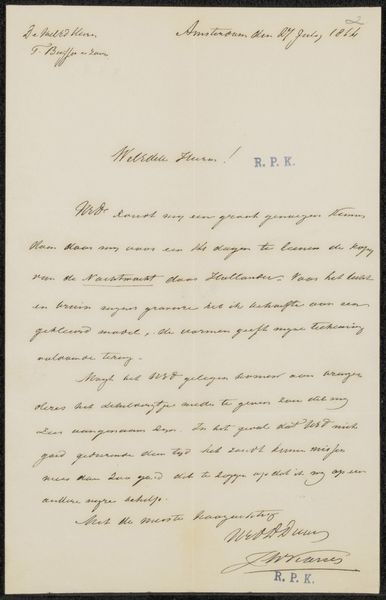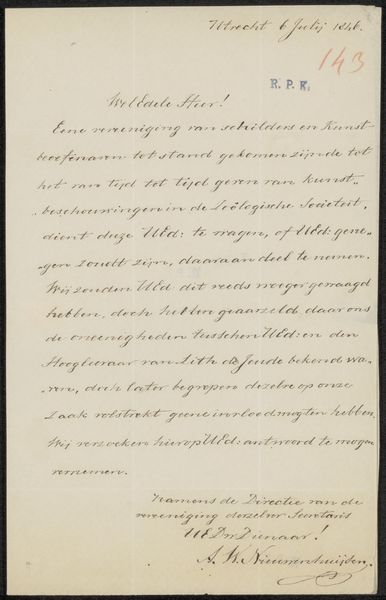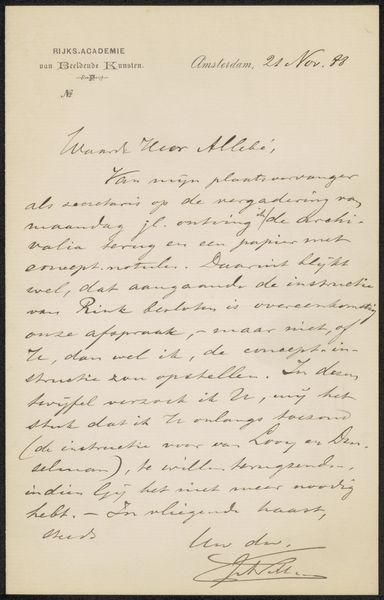
drawing, paper, ink, pen
#
drawing
#
paper
#
ink
#
pen
#
calligraphy
Copyright: Rijks Museum: Open Domain
Curator: Take a look at this handwritten piece, "Brief aan Christiaan Kramm," which translates to "Letter to Christiaan Kramm," possibly dating back to 1863. The artist, Johann Wilhelm (I) Kaiser, used pen and ink on paper to create it. It's currently housed in the Rijksmuseum. Editor: My first impression is how delicate yet controlled the writing is. There’s a somber and intimate feel about holding such a personal and yet historical script. It suggests thoughtfulness, care, but also perhaps the weight of the communication it holds. Curator: It's remarkable how much expression can be conveyed through handwriting alone. The symbols created in this document, though mainly linguistic, convey so much meaning. What thoughts come to mind when considering script as image? Editor: Considering handwriting as an image brings forth the deeply human desire for expression, and the almost ritualistic nature of correspondence. There is a layering of intentions present: The clear pragmatic sharing of facts coexists, intimately bound, with carefully styled lettering carrying subconscious signals regarding persona, class and self-regard. The overall visual is as carefully created and curated as any painting or public art form might have been during the epoch in question. Curator: Indeed, handwriting, in its own right, acted as a reflection of the writer's cultural upbringing, artistic taste, and socio-economic status. We're presented not just with information, but a window into the mind and values of the sender. Moreover, the very act of letter-writing was then deeply woven into the societal and personal relationship fabric. The museum context almost freezes it as specimen to admire. Editor: Agreed. Context completely shifts the weight the document assumes, doesn’t it? While the letter might have been quite a functional, immediate and casual article at inception, the passage of time now enshrines the paper as a window into another mind. The very survival of this script imbues this simple document with power and mystique far exceeding what its originator imagined. Curator: In this light, viewing old scripts fosters our sense of continuity, reinforcing how personal expression has adapted across eras. Appreciating “Brief aan Christiaan Kramm,” opens an invitation to engage deeply in cultural understanding. Editor: Exactly. This single sheet encapsulates both history and the subtle echoes of daily human interactions, and reminds us of their enduring symbolic power. It shows that every correspondence leaves behind echoes resonating through cultural time and memory.
Comments
No comments
Be the first to comment and join the conversation on the ultimate creative platform.
